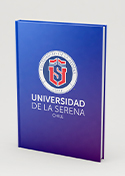Browsing by Author "Salgado-Luarte Cristian"
Adaptive plasticity to drought of Grime's CSR strategies
(2023/11/01) Escobedo Victor M.; Molina-Montenegro Marco A.; Salgado-Luarte Cristian; Stotz Gisela C.; Gianoli Ernesto
Grime's strategies (competitor, stress tolerator, ruderal; CSR) represent viable trait combinations with which species deal with environmental conditions. CSR strategies are broadly used to understand plant adaptation to the environment, yet their plastic responses have received little attention. A globally-calibrated tool (StrateFy) estimates CSR strategies using specific leaf area (SLA), leaf dry matter content (LDMC) and leaf area (LA) data, but these three traits can hardly characterise whole-plant responses to the environment individually. CSR strategies reflect tradeoffs among growth, survival and reproduction, at both leaf and whole-plant levels, thus integrating several functions. We hypothesised that CSR strategies and the three constituent traits would show independent plasticity patterns, and that CSR strategies would be more likely to show adaptive responses, i.e. to fit expected functional responses to environmental gradients. We compared phenotypic plasticity to drought in single traits (SLA, LDMC and LA) with the integrated plasticity of the resulting CSR strategy. The study species was the invasive plant Mesembryanthemum crystallinum, which is distributed in arid and semiarid Chile. We found that trait plasticity was rather idiosyncratic and contrary to what would be expected from a functional adjustment to drought: LDMC did not change (expected response: increase) and SLA increased (expected response: decrease). Conversely, plastic responses of CSR strategy and LA were consistent with functionally adaptive responses to drought in all populations: S-strategy increased, while C-strategy and LA decreased. We advocate the use of Grime's CSR theory as an integrative approach to further our understanding of adaptive plasticity in plants.
An exotic plant species indirectly facilitates a secondary exotic plant through increased soil salinity
(2023/08/01) de la Cruz Henry J. J.; Salgado-Luarte Cristian; Stotz Gisela C. C.; Gianoli Ernesto
Indirect facilitation among exotic species may promote their establishment on ecosystems, causing biodiversity losses. However, few experimental studies have identified the mechanisms underlying the indirect facilitation among exotic species. In central-northern Chile, Mesembryanthemum crystallinum (Aizoaceae) is an exotic halophyte that increases soil salinity, while M. nodiflorum is another exotic halophyte -currently less dominant- that often co-occurs with M. crystallinum. In this study, we evaluated the indirect facilitation of M. nodiflorum by M. crystallinum which was mediated by the suppression of salt-susceptible native competitors via increased soil salinity. We further determined the relationship between salt-tolerance traits and the outcome of competitive interactions in saline soil. We included two native Asteraceae plants co-occurring with these Mesembryanthemum species: the -highly probable- salt-susceptible Helenium urmenetae and the salt-tolerant Amblyopappus pusillus. We combined field co-occurrence surveys with greenhouse germination and competition experiments. The Mesembryanthemum species tended to co-occur, which suggests facilitation. Further, the salinity level found under M. crystallinum significantly decreased germination and performance of H. urmenetae, but not of M. nodiflorum and A. pusillus. Accordingly, when in competition, the increased salinity counteracted the negative effect of H. urmenetae on M. nodiflorum biomass, giving M. nodiflorum a competitive advantage. These patterns were associated with decreased specific leaf area and crassulacean acid metabolism expression in M. nodiflorum. In contrast, A. pusillus and M. nodiflorum maintained a neutral interaction regardless of salinity. Overall, our results suggest that M. crystallinum, by increasing soil salinity, may reduce the performance of salt-susceptible competitors, indirectly facilitating the establishment of M. nodiflorum.
Correlation of plasticities to drought and shade: implications for environmental niche overlap in drylands
(2024/03/01) Escobedo Victor M.; Rios Rodrigo S.; Salgado-Luarte Cristian; Gianoli Ernesto
Phenotypic plasticity can increase the extent of the environmental gradient occupied by a species (niche breadth) and modify the portion of niche space shared among co-occurring species (niche overlap). Thus, phenotypic plasticity may play a role in community assembly processes. Given that plants deal with a multivariate environment, and that functional traits are often correlated, plastic responses to different environmental factors are likely correlated. However, the implications of correlations of plasticities for niche overlap remain unexplored. Here, we present and evaluate a conceptual framework that links correlations of plasticities and niche overlap patterns among co-occurring plant species. We specifically tested in an arid shrubland whether positive, negative, or null correlations between plasticity to light and water availability would be associated with patterns of high, low, or random niche overlap, respectively. Field data identified light and water availability as key factors shaping herbaceous plant community structure. We estimated species' niche breadth and niche overlap using two-dimensional kernel-density estimations (NOK) and standardised effect sizes of Pianka's niche overlap index (OSES). We measured phenotypic plasticity to light and water availability in the six most abundant species in a greenhouse experiment. We used the plasticity index (PI) to test 1) the relationship between plasticity to light and water availability, and 2) the association between overall plasticity (average PI across traits) and niche breadth. We found a positive relationship between plasticity to light and water availability. Increased overall plasticity was associated with a broader niche breadth. Both NOK and OSES estimations indicated a significant niche overlap pattern. Results supported one of the predictions of our conceptual framework: that a positive correlation of plasticities would lead to increased niche overlap. The verified conceptual framework broadens our understanding of the role of phenotypic plasticity in plant community coexistence.
